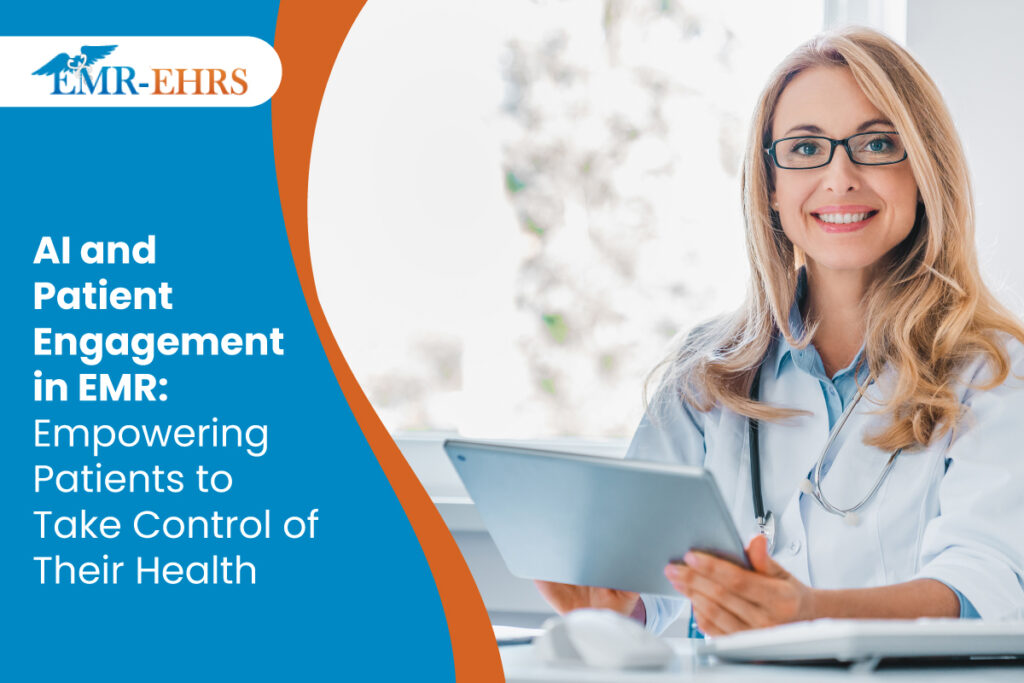
High retention rates are a testament to patient satisfaction, trust, and a positive healthcare experience. For single and multispecialty clinics, improving patient retention and keeping them engaged with ongoing care ensures a steady revenue stream.
Yet sustaining effective communication with patients poses a significant challenge, especially given the growing healthcare demands and changing expectations. Clinics also recognize that disengaged patients can severely impact their practices.
Adopting patient electronic health records (EHR) and providing patients access to a care portal, app, and other engagement tools can transform their care experience positively. These healthcare technologies streamline administrative tasks, minimize wait times, and greatly enhance patient satisfaction.
Start Retaining More Patients Today
Start with Efficient Scheduling
Imagine a world where scheduling appointments is a breeze. Booking appointments with an electronic patient record makes this a reality. Here’s how it works:
- Efficient Scheduling: The integrated system allows patients to book appointments online at their convenience, with no more back-and-forth phone calls or long hold times.
- Reduced Wait Times: The system adeptly manages appointment slots with real-time updates and smart scheduling, resulting in shorter patient wait times.
- Appointment Reminders: Automated reminders via text or email reduce no-shows and keep patients informed about their upcoming visits.
This streamlined approach not only saves time for your staff but also makes the whole process hassle-free for patients. Advanced solutions also cater to urgent or emergency appointments through handheld integration, voice response capabilities, and point-and-click scheduling functionalities.
Boost Your Communication Game
Today’s patients are increasingly tech-savvy and value convenience in their care interactions. This growing preference necessitates clinics to provide them with sophisticated tools like:
- Patient Mobile App: Integrated with the provider’s app and EHR, this app allows patients to access their medical records, schedule appointments, receive reminders, and communicate securely with their healthcare team—all from their mobile devices.
- Patient Portal or Care Portal: Clinics can bridge communication gaps by combining the EHR and patient care portal. With a seamless user interface across different devices, patient portals enable patients to view lab test results, request prescription refills, and send messages to their providers from their phones or laptops.
- Telehealth Services: Integrated into the portal and mobile app, telehealth enables patients to have virtual visits with their providers. This option is particularly valuable for remote consultations, follow-up appointments, and managing chronic conditions without the need for in-person visits.
At the front desk, staff can actively advocate for using these engagement tools among patients by emphasizing practical benefits, such as accessing health information and completing specialty-specific questionnaires before appointments.
Make Care Coordination a Breeze

When primary care physicians and specialists don’t communicate effectively, it can create bottlenecks in patient care. Studies find that specialists lack critical patient information in 68% of instances, causing unnecessary delays and potentially jeopardizing patient health.
Integrated EHR systems play an important role by facilitating seamless exchange of patient data—from medical history to diagnostics. EHR solutions are designed to be interoperable, meaning they can communicate and exchange data with other systems. This feature ensures specialists are well-informed to deliver prompt and optimal care.
Optimize Retention through Precision Care
To ensure patients return consistently, it is important to deliver exceptional care every time. Integrating clinical guidelines and protocols allows providers instant access to best practices and evidence-based approaches for each patient.
This integration also enables timely alerts for screenings and personalized treatment plans. For instance, a 40-year-old patient visits their family medicine clinic for a routine check-up. The clinic’s EHR system is equipped with integrated preventive care guidelines.
During the visit, the EHR alerts the provider that the patient is due for a colorectal cancer screening (an alert that the system flags based on the patient’s age and family history). The provider discusses the importance of the screening with the patient, schedules the procedure, and sends a reminder through the patient portal. This proactive approach ensures adherence to preventive care guidelines and fosters patient trust, increasing the likelihood of continued care with the clinic.
Unlock Personalization with Data
When boosting patient retention in healthcare settings, consider this view: every patient is unique, and so is their EHR data. Clinicians who recognize this point turn to EHR data when tailoring treatment plans.
With an EHR-integrated patient portal, providers can also personalize care by sending educational materials relevant to each patient’s health status. These resources may include nutrition guides, exercise plans, stress management techniques, and mindfulness practices.
For example, a patient with diabetes might receive tips on managing their condition, reminders for regular check-ups, and updates on new treatments. This custom approach instills trust in providers and the prescribed therapies.
Predictive Analytics for Proactive Care
For advanced solutions, clinics should consider implementing predictive analytics models within the EHR. Providers can use this tool to identify patients at risk of non-compliance and initiate early interventions, personalized outreach campaigns, or preventive care measures.
Takeaway

High patient retention rates are not just a metric of success but a reflection of patient satisfaction and positive healthcare experiences. For clinics, maintaining patient engagement and providing ongoing care is crucial for fostering long-term relationships while meeting the bottom line.
Clinics can revolutionize the patient care journey by adopting EHR systems, providing telehealth services, and offering access to patient care portals and apps. These engagement solutions streamline scheduling, care coordination, precision care, and personalized communication.
Tap Into Our Expertise
Want to keep your patients coming back? 1st Providers Choice is here to help with our top-notch EHR and practice management solutions tailored just for you. We offer reliable, integrated tools to make patient care a breeze, including:
- Patient Appointment Software: Easily manage your schedule and reduce no-shows.
- Patient Healthcare Portal: Give your patients quick access to their health information and boost their engagement.
- Mobile App for Providers and Patients: Keep communication smooth and coordinated with our handy mobile app.
Our easy implementation roadmap covers everything from data conversion to training and onsite support nationwide. See how our EHR system can boost patient retention in your practice. Call (480) 782-1116 for a demo today!







